Soccer

Soccer Tactics and Skills
There are various individual skills and team tactics needed to play effective football. Football is in theory a very simple game, as illustrated by Kevin Keegan's famous assertion that his tactics for winning a match were to "score more goals than the opposition". However, well-organized and well-prepared teams are often seen beating teams with supposedly more skillful players, even over time. Coaching manuals and books generally cover not only individual skills but tactics as well.
Substitutions
In competitive 11-a-side matches, teams are allowed to bring on up to three substitutes. The rules of the competition must state the maximum number of players allowed to be named as a substitute, which may be anywhere between three and twelve. In non-competitive matches, the use of substitutes must be determined before the match begins, except in friendly international matches, where no more than six substitutes may be brought on.
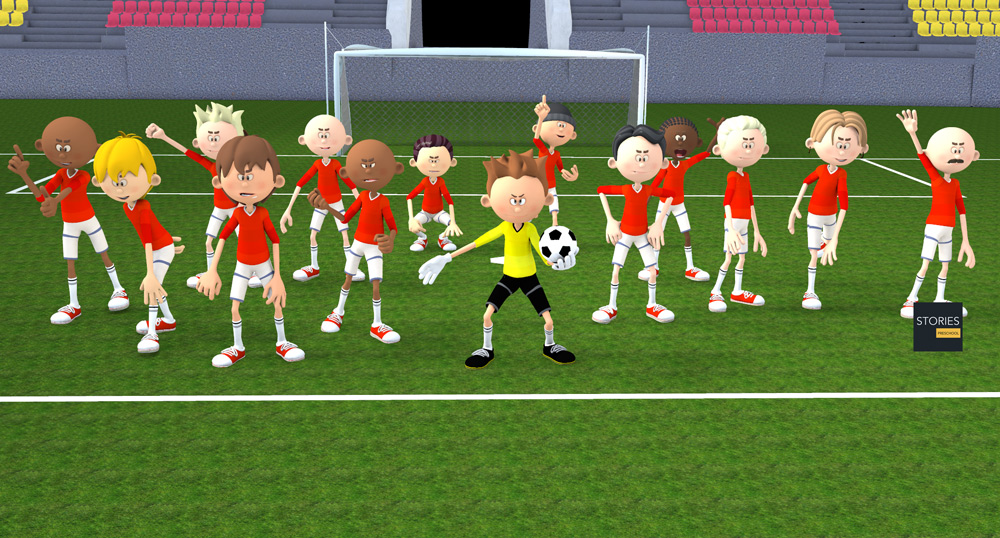
The most tired players are generally substituted, but only if their substitutes are well trained to fill in the same role, or if the formation is transformed at the same time to accommodate for the substitution.
Coaches often refrain from substituting defensive players in order not to disrupt the defensive posture of the team. Instead, they often replace ineffective attackers or unimaginative midfielders in order to freshen up the attacking posture and increase their chances of scoring.
For a team that is losing a game, a fresh striker can bring more benefit in circumventing an opposed defense line composed of relatively tired players. For a team that is winning a game, a fresh midfielder or a defender can bring more benefit in strengthening the defense against the opposition's attackers (who may be fresh substitutes themselves). In this situation, it is usually imaginative attacking flair players who are replaced by tough-tackling defensive midfielders or defenders.
Injured players may also need to be substituted. For each injured player who must be substituted, the team loses one more opportunity to influence things later in the game in their favour.
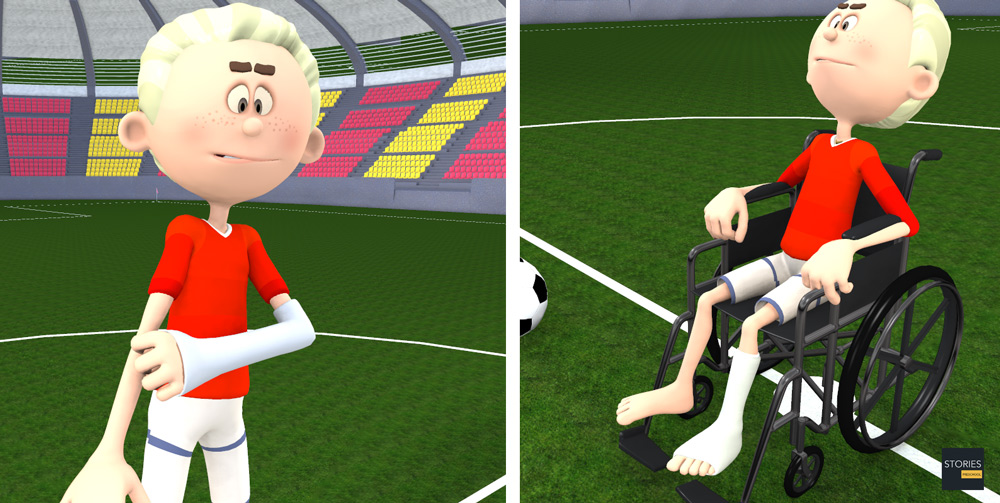
Substitutions can also be used as a time consuming tactic to hold a one-goal lead in the last minutes.
Fouls and Poor Conduct
The following are fouls or poor conduct practices in football:
- Pretending injury in order to delay play or to get an opponent booked or sent off
- Teasing opponents to get them out of balance
- Attempting to influence the referees
- Stealthily touching the ball with the hands
- Stealthily holding the shirts of opponents players
- Illegally stopping players in a counter-attack
- Recklessly dueling with the opponent's goalkeeper
- Professional fouls
- Purposely slowing down your opponents' speed of play
Although some fans and players see foul play as a good part of the game (as long as it helps them win), FIFA constantly change rules and issue campaigns for promoting "Fair Play".
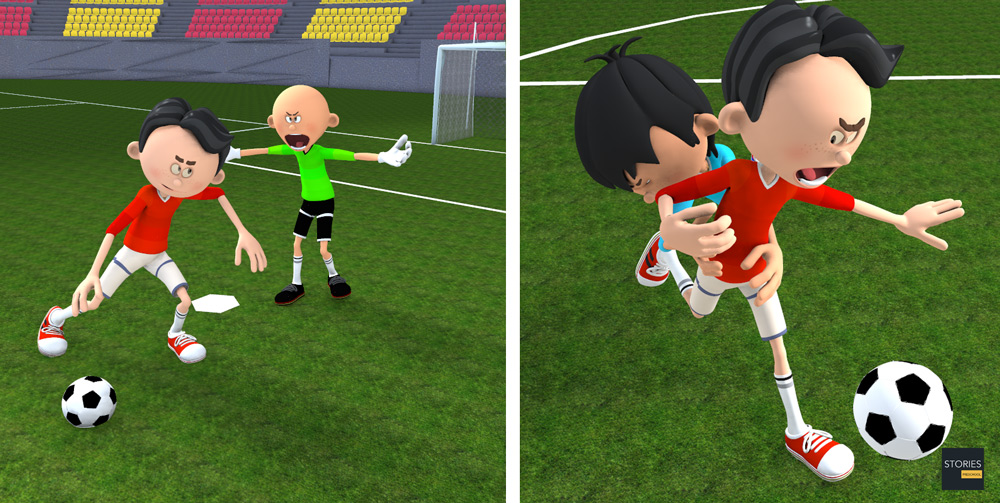
Individual Skills
The importance of a skill depends to an extent on the player's position on the field. Overall, football skills can be divided into four main areas, namely outfield technical, physical, mental and goalkeeping technical abilities.
Physical Skills
- Pace
- Agility
- Sprinting
- Stamina
- Power
- Endurance
- Jumping
- Balance
- Strength
- Strength to resist tackles
- Resistance
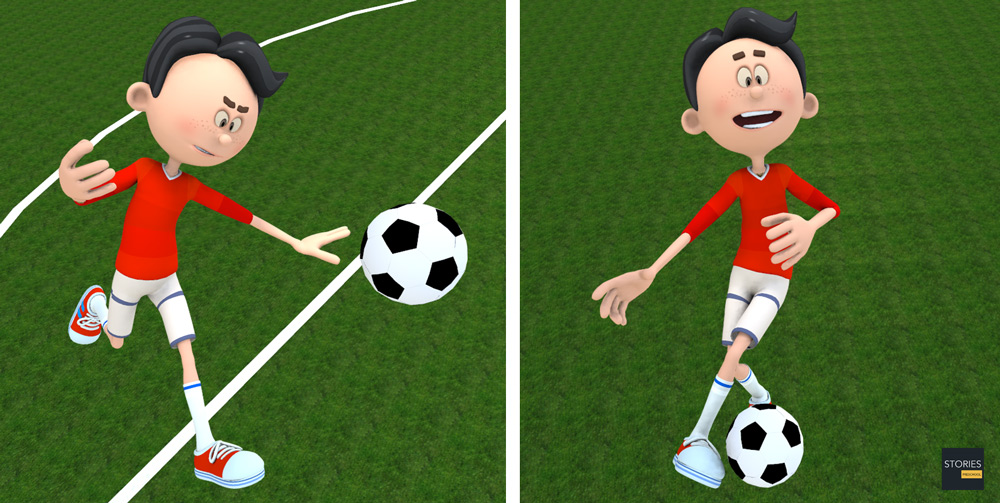
Mental Skills
- Intelligence (game understanding)
- Vision (ability to see build-up play ahead to others or ability to see a pass or awareness of players around you)
- Composure (ability to control the game at any critical situation in the match)
- Leadership (able to guide the youngsters in the field and be able to motivate and inspire others)
- Communication (can be considered a mental ability)
- Decision-making (determine in advance what to do)
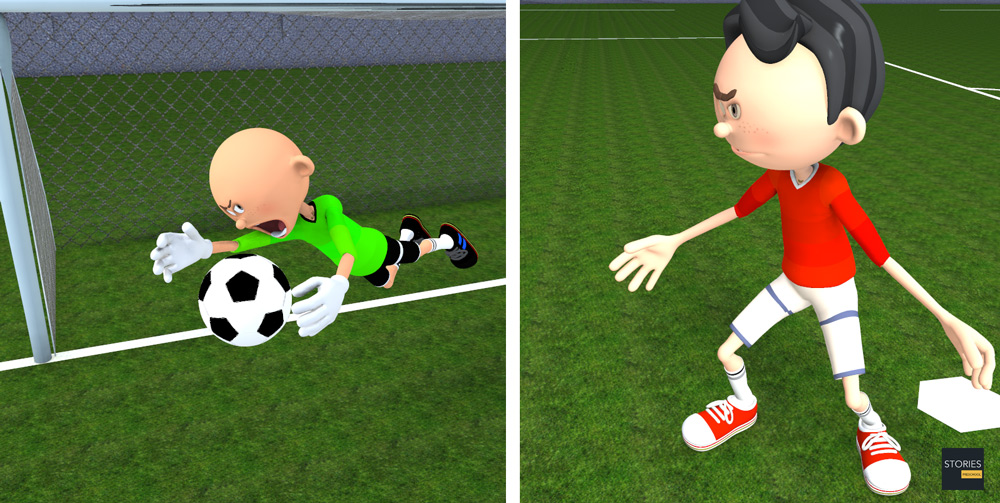
Goalkeeping Skills
- Jumping (can be considered a physical ability)
- Agility (can be considered a physical ability)
- Balance (can be considered a physical ability)
- Communication (can be considered a mental ability)
- Goal kicker (can be considered a technical ability)
- Handling (can be considered a technical ability)
- Positioning
- Reflexes (can be considered a mental ability)
- Distribution (ex.Throwing, punting) (can be considered a physical ability)
- One on ones
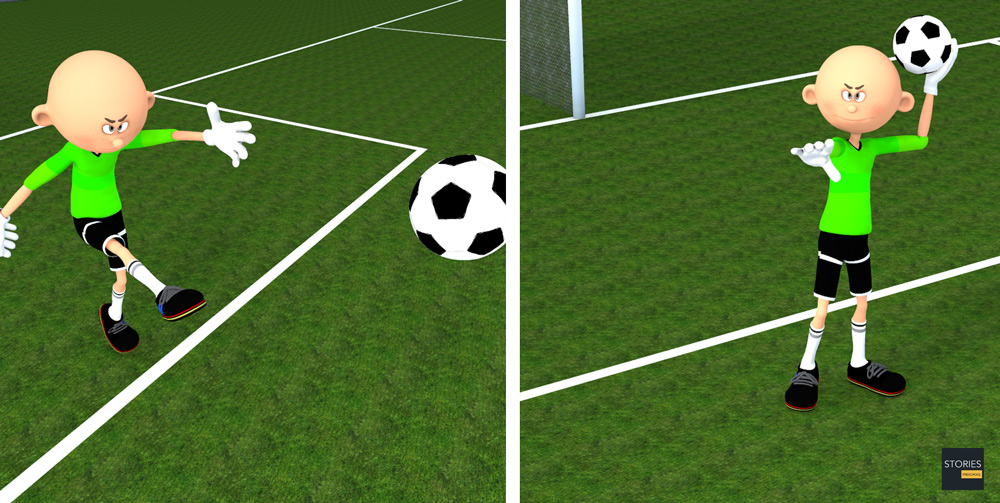
Tactics During a Game Situation
General Principles of Attack and Defense
Width and depth are both principles of offense and defense as follows:
- Width in attack- the attacker tries to divide the defense by spreading strike points across a broad front, rather than attempting to force advances through narrow channels. This may involve play from the wings, or rapidly shifting into open lanes/open space when approaching the goal. Mainly using wingers, often gaps are made between defenders using the width. These gaps can be used to feed the ball to strikers.
- Width in defense- the defender counters, trying to contract and deny width. Attackers are "shepherded" or channeled into narrower or more crowded avenues of approach
- Depth in attack- the attacker uses depth by moving men up from the rear, but may use a constant "target striker" or front man to always be present deep in the defense.
- Depth in defense- the defender also uses depth by marking supporting players in the opposing team, and holding back a man as cover for more advanced players, sometimes in a "sweeper" or "libero" role. Therefore, the attacking player with the ball won't have anyone open for a pass. Alternatively, defenders may abandon depth temporarily to set an offside trap.
- Balance in defense. The defense attempts balanced coverage of vulnerable space. Defenders do not simply cluster on the right side for example, just because the ball is there at the moment.
Offensive Tactics: Attacking
- 'Pass and move': This is the most basic team tactic — as soon as the ball has come into possession of the player, they need to be quick to decide whether to pass it or not. If they don't pass it immediately, they need to move with it; if they do pass it, they again need to move along, following the general ball movement.
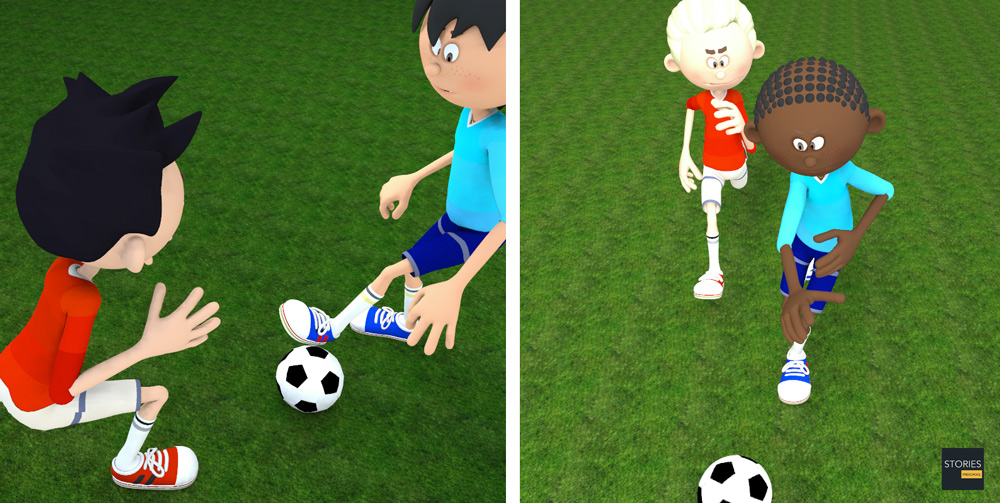
This can also be used to mean that once a player has passed the ball he does not remain stationary but moves into a position where he can receive the ball again and give more options to the player in possession.
- 'Give and go' [or 'combination passing']: This is a basic tactic which is essentially the same as 'pass and move', and is an essential part of the 'target man' style of play (see below). The player in possession of the ball plays a pass to a teammate and then immediately seeks to move into space. If the player who passed the ball can 'lose' his defensive marker (either through pace, movement, superior fitness or a lack of awareness on the part of the defender) he could then be free to receive a return pass and advance towards and possibly threaten the goal. When the ball is played by the receiving player immediately back to the first player this is known as a 'One-Two' (in British parlance)
- Switching the attack: Using a 'square' or 'cross' pass across the whole width of the pitch to a player in plenty of space is a very effective way of both relieving pressure and building a fresh attack. The defending team will be required to adjust its positions and this usually creates spaces which can be exploited. In this example, the player numbered 1 has moved out of position, allowing more space for the opposing player. By playing the ball to the other side (the curved line represents an aerial pass), the recipient of the pass finds themselves in space which can be exploited.
- The 'through ball' (slide rule pass): Using the space behind the opponent's defensive line: Passes into this area have a number of pros: If an attacking player reaches the pass, taking care to avoid offside, he may get a 1-on-1 challenge with the goalkeeper, or be in an excellent position for a flank attack. Even if a defender reaches the pass first, the outcome could still be good for the attacking team. The defender will face his own goal, which could prompt him to give away a corner kick or a throw-in, make a risky pass to his team's goalkeeper, or being put under heavy pressure near the corner flag. Typically, teams with faster attackers than the opponent's defenders will try challenging this space, while the defending team in these cases will want to keep their defenders low when defending in order to give away as little space as possible between the defenders and the goalkeeper.
- The long through ball: This is a long, and usually high, pass from a teams' own half, over the heads of the other team's defense. It is intended for the attacking players to chase and it is important that they remain in an onside position until the ball is kicked. The tactic works best with strong and fast forwards who will have a good chance of winning back the ball, taking control over it, and eventually getting a shot on goal. In the diagram, the ball (red line) is played in front of the furthermost forward, the dotted blue line showing their run. In this example, a through-ball pass along the ground would be picked up by one of the defenders (black team) because the gap between the two central defenders is too small.
- Using the space between the opponent's defensive line and midfielder line ('the hole'): A common build-up of attacks is to pass the ball into the space between the opponent's defenders and midfielders. Normally, an attacker with his back to the goal will receive the pass. He will seek to turn with the ball, or distribute it to a player facing the goal, who optimally also is in front of the opponent's midfielders - or even on the move into the space behind the opponent's defenders.
- Triangular movement: This is a movement tactic that allows a safe and quick shifting of the offensive flanks while maintaining control of the ball. In a triangular play the ball is passed between three players to form a triangle. The triangle is then shifted to a different position when a new player is added. Many triangles can be created with various combinations of players with the intention of slowly moving the ball forward and never really compromising possession. This tactic works well when trying to gain control in the midfield. However, it can also be used for pure attacking purposes. The effectiveness of this tactic lies in the fact that defenders are unable to quickly 'adapt' to the other attacker's style of play.
- Swapping of the wing men: Sometimes, a team with two flexible (position wise) wide men will allow them to interchange as the game progresses. The aim of this is to confuse the defenders who are assigned to mark them, thus maybe leading to opportunities as the defender tries to find their man in set pieces (corners, free kicks etc., where the man may be in a totally different position and thus evade his grasp). Also, if the wingers are different types of player (one favouring crossing from deep positions whilst the other is prone to trying to dribble past their marker for example), then it might be to exploit a weakness in the opposing defender.
- Strong Side Overloads: An offensive attack can pressure the defense on to one side of the pitch by running most of its attackers and midfielders to one side letting a wing player or defender come to the opposite side with little or no coverage. The ball is then crossed or passed to that unmarked player for a free or near free shot.
- Using a target man: This tactic is useful when the team possesses a quality striker who has the ability of taking on the whole defense on his own. He will usually occupy two defenders, thus making the defense more vulnerable. Combined with two fast wingers, this tactic may give the 4-man defense potential problems. The team may also benefit from a target man at set pieces. The target man, can use give/go tactics described earlier, can attempt to "knock down" high passes to teammates or can simply try to out power and outmuscle opposition defenders to create scoring opportunities for himself.
Offensive Tactics in Set Pieces
Free Kicks
Free kicks and dead-ball restarts come into play following a foul or other infractions. Indirect free kicks must be touched by another player before any shot is taken. Direct free kicks can be made directly on goal. Offensive players attempt numerous tricks to beat the defenders, who often form a solid wall of players directly in front of the goal. Attackers may attempt to blast the ball through the defensive wall, or curl it over or around using spin. A less common idea is to hit the ball powerfully and straight along the floor, since the defenders in the wall usually jump to try and prevent a shot being lifted over their heads.
Throw-ins
How throw-ins are best handled depends on where it is:
- In one's own half the aim of a throw-in may be to retain possession in order to build up the next attack. The throw may or may not go toward the opponents' goal; the most unmarked player may be a full-back who is behind the ball. Such a throw followed by a quickly taken 'switch' pass can be an effective tactic. Under pressure however, the ball is often thrown up the line, toward the opponents' goal line to gain as much ground as possible.
- If the thrower is unmarked, a simple tactic is to take a short throw to the feet or chest of a marked player who immediately returns the ball to the thrower.
- In the last third of the pitch a player with a long throw can put pressure onto the defenders by throwing the ball deep into the opponents' penalty area, resulting in somewhat similar tactics to a corner kick situation, but with the added advantage of avoiding the offside trap, as an attacking player cannot be offside from a throw in. Players well known for their long throwing skills are Rory Delap, Giorgio Chiellini and Morten Gamst Pedersen.
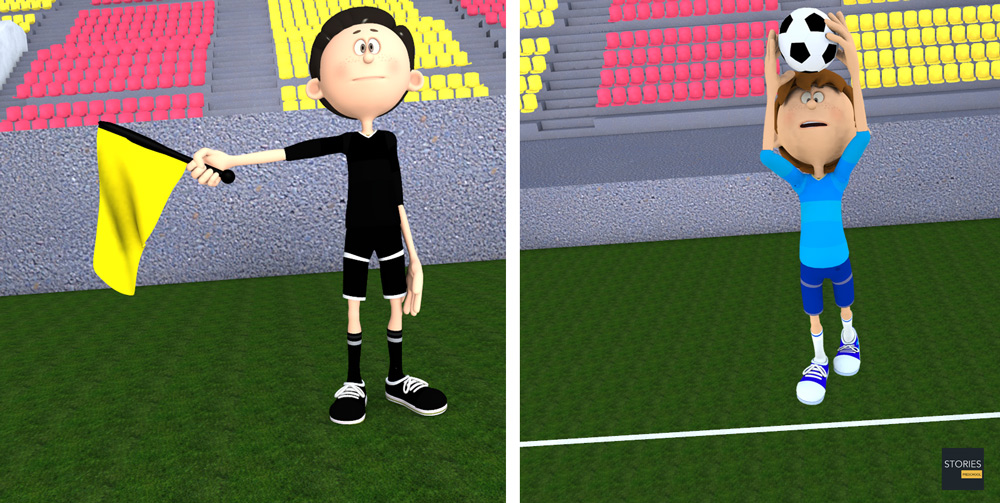
Goal Kicks
A goal kick is an important 'set piece' that will occur many times in a game and yet few teams practice it. If taken quickly the kick may be taken short to a full-back who has run into a wide position. Although this may gain little ground it retains the all-important possession of the ball. A longer kick to the midfield is more common and it is vital that the midfield unit are in a position to receive it.
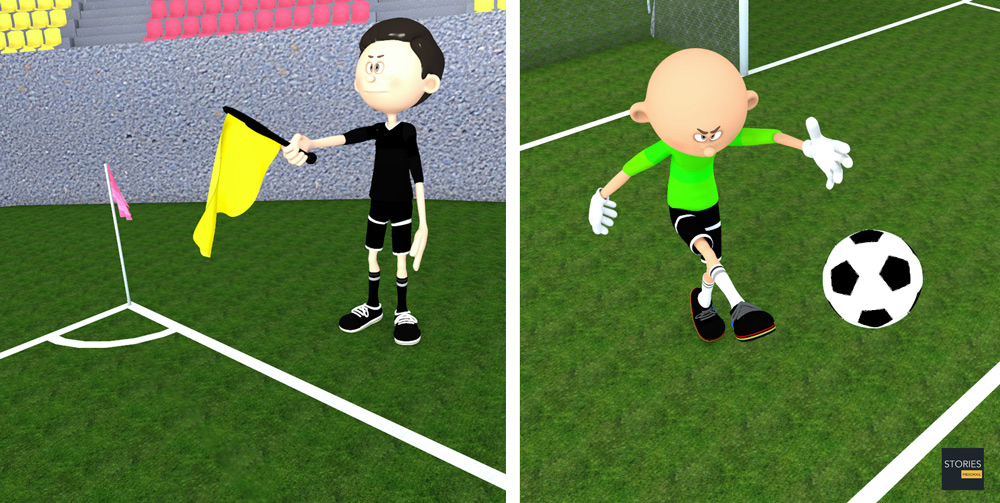
Corners
A corner kick (or "corner") is a real goal scoring opportunity and it is essential to know who is the best at taking a good corner from both the left and right side of the pitch. A good corner will be aimed high across the goal and may be 'bent' towards or away from the goal. At least one of the forwards should be on or close to the goal line when the kick is taken.
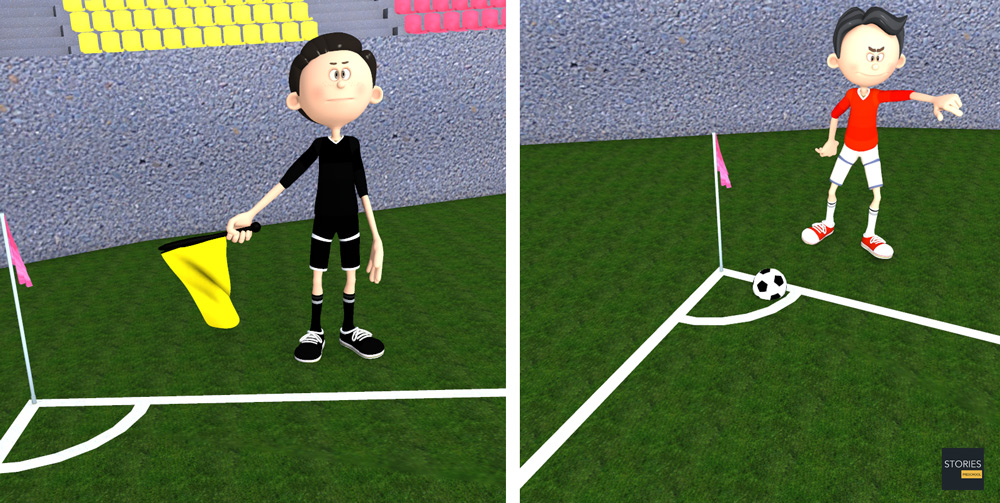
Another tactic on a corner is to let the best shooter stay in the back "trash" position and have the defense worried about those up front. The player taking the corner kick makes a small pass back to the trash shooter who has time and space to take a good shot.
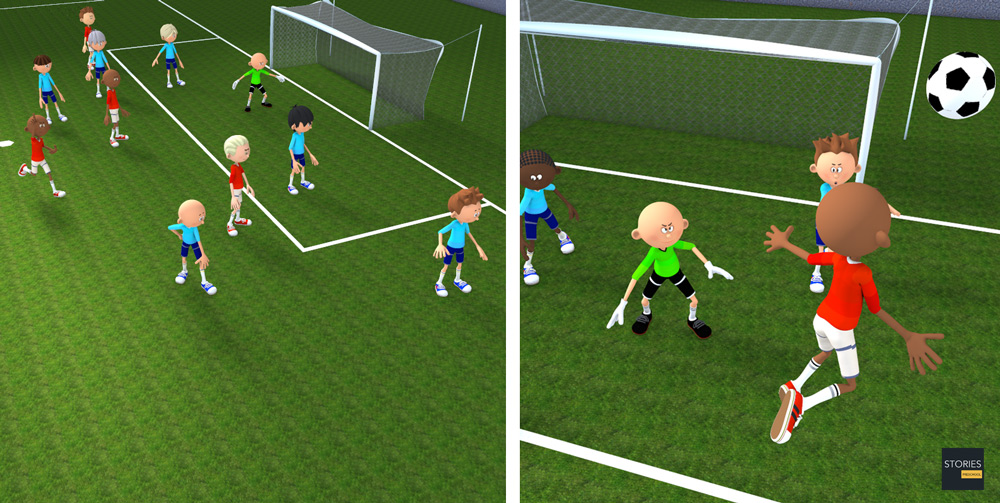
General Defensive Tactics
All eleven players on the pitch have a defensive role. Which roles they are assigned, depends on tactics. In principle, there are two ways of defending, zone defense and man-to-man defense. In a zone defense, defensive players mainly move in relation to each other, whereas a man-to-man defense mainly moves in relation to opposing players. Whenever defensive players are given, or give themselves, a larger degree of freedom, hybrids of the two are seen.
First, Second and Third Defender
The first defender has the main responsibility for what the opponent in possession does, seeking to obstruct dangerous passes. The initial few seconds after a team has lost the ball are important, as the newly-defending team in these seconds will be poorly organized defensively. Wise first defending will contribute to the defending team managing to organize before the opponents attack.
The first defender should usually be the player closest to the opponent holding possession, but needs to be at the defending side of him in order to do an effective job. He or she should keep a distance of about 2 metres, although the ideal distance will vary with each situation. The point is to pressure the opponent as much as possible without giving him a large possibility of a dribble. As a dribble isn't as dangerous when the defending team is well organized, the distance may be shorter in these cases. Analogously, the distance should be increased if the defense is poorly organized.
In certain cases, the first defender should attempt a tackle. Often, however, this will increase the probability of being dribbled and passed.
The direction in which to move towards the opponent with possession of the ball may be the shortest direction. However, it may be of value to curve the defensive run, in order to channel (also called "show") the opponent in a certain direction. If the defensive team is well organized, he should be channelled ("shown") towards the centre of the pitch. In the case of temporarily poor defensive organization, however, he should be channelled towards the line.
The second defender is for security if the first defender is passed. In that case, he takes over as first defender, and ideally one of the third defenders takes over as second defender. The team should be organized in a manner to make this transition as fast as possible. The typical ideal distance between the second and first defender is about six metres, but this will vary strongly from situation to situation. The most important factor is the opponent's speed. If he's moving fast, the distance should be longer. If he's standing still, the second and first defender may in some cases join forces and work as two first defenders.
The job of the third defender is to provide deep cover. He is generally in a stand-off position relative to the first and second defenders and tries to view the "big picture", keeping watch for new opponents moving up, and covering vulnerable gaps if the first and second defenders are bypassed. The sweeper role is sometimes conceived as that of a third defender, but every defensive player not immediately engaging the ball has the obligation to adjust his positioning to guard against dangerous situations and to plug vulnerable gaps. While the role of first and second defenders are rather similar, the third defenders' role is very different in zone defense and man-to-man defense. Also, their organization will vary with formation.
The Zone Defense
In zone defense, second and third defenders and midfielders are organized in two lines, in the transverse direction of the field, thus organizing a defender line and a midfielder line, the midfielder line working as an "outer shield" for the defenders. The lines should be as straight as possible, although the first defender and in some cases the second defender may rush out of it to pressure the opponent with the ball. A straight line of defenders may prevent spaces behind some of them due to the offside rule. Also, even in zone defense, some opponents, for example those moving into dangerous space, may temporarily need to be marked. The man-to-man defense ideology holds that almost all opponents need to be marked at all times, although they will have to keep an eye on zone considerations as well, and usually a sweeper will be given a free defensive role. In practice, however, every defense will be a mix of zone defense and a man-to-man defense, although often with heavy leanings towards one or the other.
The number of players in the defender and midfielder lines is given by the number of football formations. Some formations use midfield anchors to stop attacks between the two lines. Attackers usually also play a role in pressurizing defenders, in order to give them less time to find good passing alternatives.
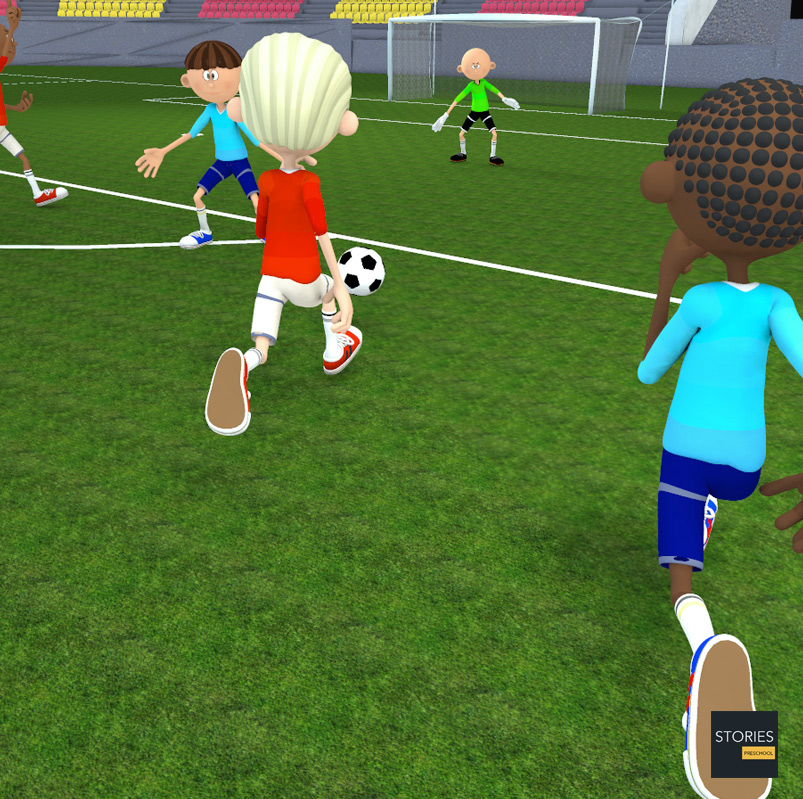
The lines should be shifted sideways depending where the ball is. The third defenders should keep a sensible distance to each other, depending on the width the opponent's attacking players are distributed in.
Depth Considerations
The distance between the defender line and the midfielder line should be kept constant at about 15 metres. However, the defensive line should back up and thus increase this distance, stand off, when there is no pressure on the opponent in possession, as this increases the possibility of a through ball. With tough pressure on the opponent, the distance may be reduced to below 15 metres. Also, as opponents move in close to the penalty area, the defending team will be forced to move their midfielders ever closer to their defenders.
When organized, the defending team will offer no resistance until the attacking team has advanced to a certain height on the pitch. The pressure height, or at which depth the midfielders should start acting as first and second defenders, depends on a lot of factors. For example, as higher pressure is more tiring, it demands players with good stamina. In general, a defensive-minded team will tend to stay lower, thus diminishing defensive risks as opponents get less space. This however, also gives them a longer way to the goal in the event of a break and counter-attack, making the long through ball a typical alternative.
The Man-to-Man Defense
In a man-to-man defense system, a single defender follows his opponent wherever he goes. Extremely tight marking can be achieved in this way and star players can often be neutralized in a game by use of a dedicated "shadow". Since the man-to-man defence will take defenders in any part of the field, interceptions and broken plays will often offer opportunity for quick counter-attack. The Italian teams of the 1970s and 1980s often used this approach with impressive results.
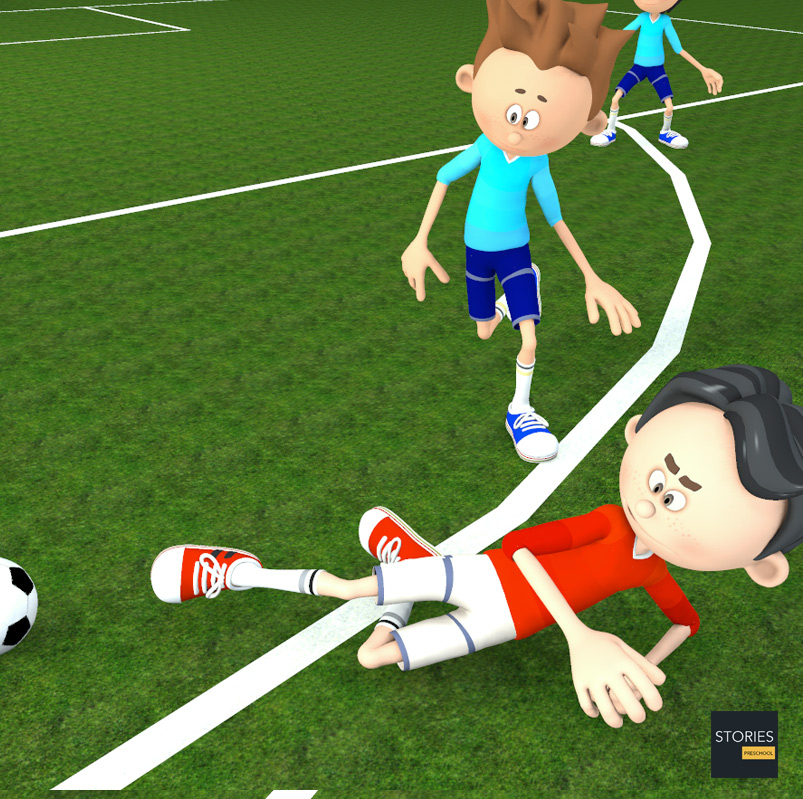
The weakness of the man-to-man defense is depth when fresh attackers move up. The man-to-man defense also allows defenders to be drawn out of position, opening gaps for other attackers in vulnerable areas. This was Italy's fatal weakness in the 1970 Final, according to some analysts. To overcome this problem with depth, the man to man defense may use a 'sweeper', who is a central defender and has a free role, i.e. has not been assigned a player to mark. He sometimes takes up a position slightly behind the other defenders, as his defensive role often is to 'sweep up' any attacks that break through the defense and as such he adds valuable depth to the defensive unit. Usually the sweeper will be the controller of the defense. They will determine where the back line should be at any given time. Zone defense does not require a sweeper role, and as many teams have changed their tactics to this, sweepers are today rare.
Defending at Set Pieces
Free-kicks from Short Range
At free-kicks from short range, particularly when defending a direct free-kick, a wall of defensive players is lined up. The number of players who form the wall depends on the angle and distance from the goal, the opponent's assumed shooting skills, and the need to mark opponents to whom the ball might be passed. The wall is usually set up at the direction of the defending goalkeeper to block a direct shot at the near post. The goalkeeper is normally positioned nearer the far post. In order to increase the difficulty for the free-kick taker to kick the ball over the wall and into the goal it is common for the players in the wall to jump vertically when the kick is taken. Defending indirect free-kicks provides different difficulties for the defending team. The wall must be prepared to charge down the ball once it has been touched by the free-kick taker, and other defenders must be alert to the attacking team's practiced set-plays.
Corner Kicks and Other Crosses
At corner kicks, and at direct free kick, indirect free kick or throw-ins that are likely to become a cross, most teams use man-on-man marking, even those which otherwise play zone defense. Each player is given an opponent to mark, in advanced football they usually have been assigned an opponent before the match. Substituting at the time of a defensive set piece is regarded as unwise, as play may be started before the substitute has come into marking position.
A few teams use the tactic of gathering defenders on one line on corner kicks and similar situations, in effect giving them the responsibility for zones instead of particular opponents.
Penalty Kicks
In the case of a penalty kick, no defending players except the goalkeeper are allowed within the penalty area or within ten yards of the penalty spot and 18 yards of the goal line. A significant number of players should, however, be placed right outside the penalty area, alert to advance into the area and clear any deflection. For this purpose, sometimes the attacking team will nominate two players to run at the goal from either side of the penalty spot; timing their run so that they only enter the penalty area once the kick has been taken will hopefully give them the first opportunity at gathering the ball if it is saved by the goalkeeper. This tactic is rarely seen, however, since the likelihood of the ball being saved and then falling into the path of the attacking player is small. A particular tactic that can be used by the goalkeeper involves trying to distract the penalty taker by drawing his concentration away from striking the ball cleanly. Such tactics normally involve moving one's body, or body parts, in an extravagant manner, or through verbal comments.
"Forward" Versus "collapsing" Defenses
Some teams use forward defending, aggressively challenging the ball when on the defensive in any part of the field. Others rely on a "collapsing" style, that falls back deep into its own half when the opponent is in possession of the ball. The "forward" policy can put immense physical and psychological pressure on opponents, and is aimed at slowing down or breaking up attacks early. It has more physical demands however, and may spread a defensive formation more thinly. The "collapsing" approach is more economical in physical demand, and provides a packed back zone to thwart attacks. However it sometimes creates large gaps in midfield, and invites the opposing team to dribble forward and to take shots from long range; if the opposing team is good at the two aforementioned skills then goals will be conceded freely.
Defending with the Ball
Clearing is when the player in possession of the ball is pressed hard, often near his own goal, and chooses to shoot the ball away with low precision simply in order to get out of a dangerous situation. When opponent pressure is extremely high, the ball is often cleared to a corner kick or to a throw-in. Clearing long, but into opponent control, may give the defense time and the opportunity to organize, including setting up the correct formation and pressure height. If the attack was high up the field, such as in or near the penalty area, defenders will thus quickly push out, and attackers will then be forced to retreat in order to avoid offside in the next move. Clearing may be combined with an attempt to hit a long pass or a long through ball. Players high up in the field who are pressed hard, and who are eager to avoid a counter-attack, may in some instances combine clearing with a shot.
A team composed of good passers and mobile players with good positioning skills may more often try to avoid clearing, as their skills make it easier to make shorter passes and thus retaining possession until they get out of a difficult situation.
Retaining possession in this way may also be regarded as a longer-term way of defending, as the opposing team cannot attack when they don't have the ball. With the ball, the team applying this tactic can simply pass the ball between each other - as in the possession football style, but with little or no intention of building up an attack, thus decreasing the risk of a break.
The major benefits of this tactic is that the team is in complete control over its opponents. Meanwhile, by knocking the ball around, opponents playing the pressing game can easily tire. And should an opportunity suddenly arise, defense may be quickly switched to attack. A major downfall is that because the accuracy of passes needs to be high, short passes between the players are required. This significantly narrows the gap between the attack, midfield and defense (usually, the latter is forced to push up). So if the opponent gains possession, a long ball could effectively open up the defense. Similarly, if it is the attack and midfield that need to drop back, the team will have little chances of counter-attacking even if possession is won back.
Notable Examples
Soccer coaches and technical manuals such as Soccer Skills and tactics, and The Soccer Coaching Bible, often use visual symbols and diagrams to demonstrate the principles described above, and to link principles to historical games. The following examples combine technical coaching observations with championship play descriptions at the World Cup level as in Brian Glanville's World Cup, (1994). The written descriptions are diagrammed for the reader to better understand various soccer tactics and skills as they are applied in the real world, at the highest levels.
- Combined team play using width and depth: Brazil vs Italy, 1970 Final
- Penetration and envelopment in attack: Banks versus Pelé, Mexico 1970
- The two-man combination
- The three-man move
- The quick counter-attack
- Free-kicks and set-pieces
- Moving into space - the diagonal run
SPORTS

RESOURCES
This article uses material from the Wikipedia articles "Association football" and "Association football tactics and skills", which is released under the Creative Commons Attribution-Share-Alike License 3.0.
© Stories Preschool. All Rights Reserved.












